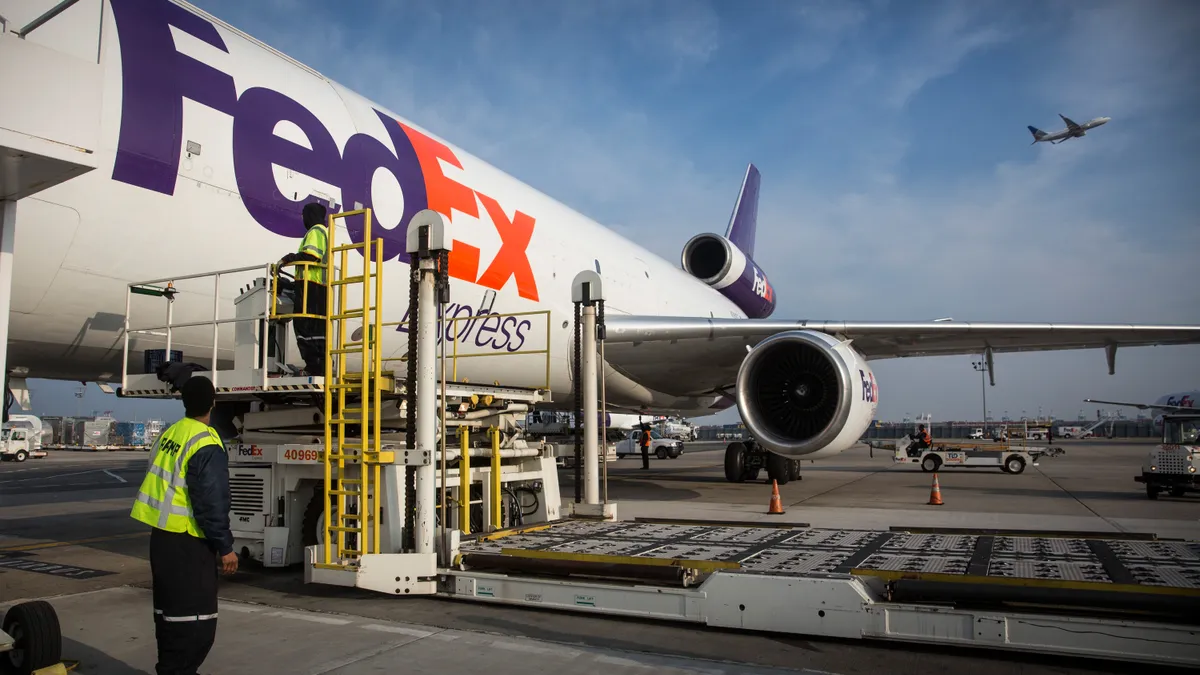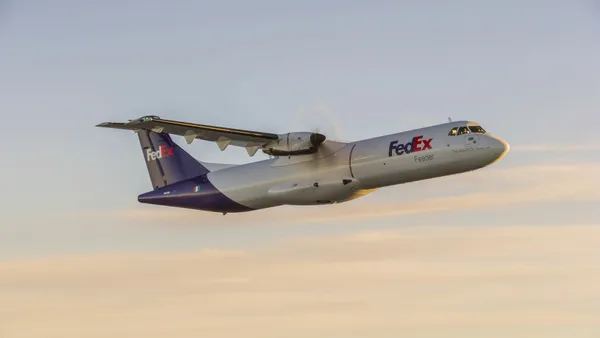FedEx is consolidating its different operating companies into one organization, the logistics giant announced Wednesday.
The phased transition is expected to be fully complete in June 2024. The move will consolidate FedEx Express, FedEx Ground, FedEx Services and other operating companies into Federal Express Corporation, which will feature a fully integrated air-ground network, according to a news release.
LTL services provider FedEx Freight will remain a standalone operating company.
"We will be leaner, more agile and better positioned to execute on our mission to help customers compete," FedEx President and CEO Raj Subramaniam said during an investor presentation, adding that improvements in data and technology will help FedEx integrate its networks.
Subramaniam will continue leading FedEx as president and CEO of the combined organization. Ground President and CEO John Smith will become president and CEO of U.S. and Canada ground operations at Express while assuming leadership of surface operations across Express, Ground and Freight. Express President and CEO Richard Smith will be president and CEO of airline and international at Express.
FedEx executives say the consolidation will help facilitate the company's existing DRIVE program and Network 2.0 cost-cutting efforts. The initiatives aim to help FedEx save a combined $6 billion by fiscal year 2027 through increased operational efficiency.
The unified organization will usher in significant changes as FedEx fully integrates its air and ground networks, ranging from a growing emphasis on rail transportation to further reducing its in-house flight activity.
More rail reliance, route consolidations underway
FedEx has identified $1.2 billion in surface network savings that can be realized in FY 2025 through the overhaul, John Smith said. A portion of this will come from increasing miles moved via rail transportation from 8% to 15%, per an investor presentation.
"The rates on the rail are approximately 36% lower than over the road," he said. "Our savings will start there."
Ninety percent of FedEx's volume moved via rail will be loaded onto company-owned intermodal containers, which is significantly more than the company moves currently, John Smith said.
FedEx is currently learning more about the consolidation process through its Network 2.0 pilot programs. Optimizing routes is the critical first piece of that program, John Smith noted. FedEx has previously disclosed it aims to operate 100 fewer stations and eliminate more than 10% of pickup and delivery routes by FY2027.
The company is already testing combined Express and Ground pickup and delivery operations in Alaska and at a facility in Minneapolis, according to John Smith.
"If you've ever seen a Ground and an Express truck in your neighborhood on the same day, or watched them pass each other on the street, you know what we're trying to accomplish," he said.
'Everything is on the table' as FedEx cuts more flights
In its air network and international operations, FedEx is on pace to remove $1.3 billion in structural costs by FY2025, according to Richard Smith.
The company is reducing 30% of its flights over the Pacific Ocean beyond those it has already cut due to declines in volumes. It is also parking more aircraft, which FedEx hopes will result in flight hours hitting double-digit percentage declines by the end of this fiscal year.
"This is true structural change, and doing this improves our profitability by reducing our operating costs and better balancing our international lanes," Richard Smith said.
Due to the decline in activity, FedEx's hub-and-spoke air network will be geared toward high-margin, time-sensitive shipments. The company will lean on third-party providers for less urgent volume. Executives have said previously that the growth in e-commerce has resulted in more volume that has more flexible delivery requirements, which has challenged the efficiency of its current Express network.
According to a video played during the presentation, FedEx will also move to have non-priority volumes spend more time on trucks instead of an airplane. A package being shipped from Paris to Washington D.C., for example, would always fly twice on its way to its destination. The company's future system will allow shipments to be consolidated into one international flight and flown into an alternative hub to avoid congestion. FedEx can then move those shipments by more cost-effective surface transportation to their final destination.
"This is not just an exercise in finding the low-hanging fruit or pushing the limits of our current operating cost structure," Richard Smith said. "Everything is on the table."














